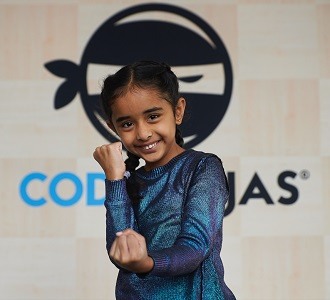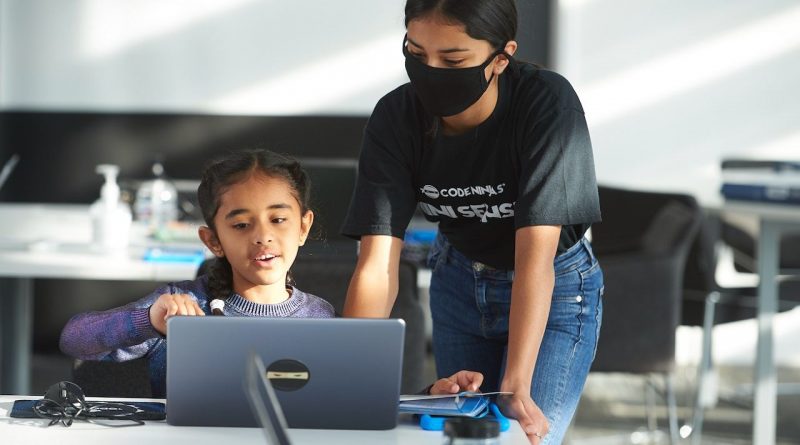Help Your Kids Catch Up in 2021
Now that the UK is firmly in lockdown 3.0, you can bet there are a fair few parents desperately mustering the energy to home-school and, perhaps more crucially, pacify their children once more. With 87% of the UK’s under-16s1 being home-schooled during the first lockdown (in April, May and June), that’s a whole lot of makeshift maths, stopgap science and improvised IT the third time around!
We have it on good authority that the trick to harmonious home learning is to set your children up with tasks and activities that are equal parts educational, interactive and fun – with just a splash of creativity thrown in for good measure!
Grant Smith, VP of Education at kids coding dojo Code Ninjas, is on hand with some ideas for activities that will encourage your children to partake in additional learning over the coming weeks – and better yet, activities that will exercise both their body and mind.
 Grant says, “The key to unlocking your child’s learning potential is to ensure they feel encouraged to explore their own creativity and feel responsible for their own productivity, no matter their age. By doing this, you’re also setting yourself up with the autonomy to go and get on with your day, whether that’s working from home or just general life tasks, at regular intervals. I’m a dad of two, so I know only too well how difficult it can be to feel like you’re setting your children up with the right activities, at the right time, and how to make sure they’re getting enough physical exercise too.
Grant says, “The key to unlocking your child’s learning potential is to ensure they feel encouraged to explore their own creativity and feel responsible for their own productivity, no matter their age. By doing this, you’re also setting yourself up with the autonomy to go and get on with your day, whether that’s working from home or just general life tasks, at regular intervals. I’m a dad of two, so I know only too well how difficult it can be to feel like you’re setting your children up with the right activities, at the right time, and how to make sure they’re getting enough physical exercise too.
“Here are some of my go-to tasks and strategies for getting the most out of my children’s at-home learning.”
• Help them organise their day
Start the day with a healthy and nutritional breakfast, equipping the whole family with the brain food needed to tackle a new morning. Then, 20 minutes before home-schooling officially starts let your child take ownership of their routine by designing a colour-coded schedule, blocking out time for each subject. I would suggest no longer than 30 minutes per ‘lesson’ for children aged four-eight, 45 minutes for children aged eight-11, and then one hour for children aged 11-16. A study break of five-15 minutes between sessions is advisable for all ages.
• Speaking of study breaks…
Don’t rely on the familiarity and convenience of the TV during downtime. I know that can be easier said than done, especially now we don’t have the benefit of the warm, spring sunshine to fill the lunchtime break. But there are plenty of fun and active games you can play inside. Why not challenge your child with 10-minute activities throughout the day; emphasis on the ‘active’.
Activity: 1-10, again and again!
One of my favourite activities to do with my children is to stick numbers from one to ten on the floor, before posing quick-fire rounds of maths challenges and telling them to jump on the answer to the question as quickly as they can. We play the game once a day, keeping track of the speed of their responses and challenging them to beat their own records.
Activity: No more ‘bored’ games
Challenge older children to create their own people-sized board game or, for children more prone to picking up the games console controller, let them loose on free game-building websites, like Scratch. Give them a few days to design the concept and come back to you with any questions, before letting their creative juices flow! Check in with them at varying points throughout the project and award them for the ways in which they’ve incorporated their standard schooling into the game. And then have fun playing the game as a family.
• Build your own study community
Schedule weekly study sessions with school friends – where would the world have been in 2020 before Zoom, Skype and FaceTime? Make the most of the resource by planning online study sessions with friends and family. To ensure children feel as though they are part of something larger than just the people within their own four walls, I would always encourage scheduling these sessions to include some downtime too, right before a lunchbreak or the end of the day, so study time can spill into a fun, interactive gaming session or dinnertime when school is over.
Grant concludes, “Remember that any time you spend teaching your child is valuable – don’t be too hard on yourself if they’re not picking up their times tables in two days or if you still have no idea what a Diophantine equation is. This period of home-learning is about encouraging your child to strive to reach goals and maintain some form of routine. Anything else is simply a bonus.”
If you’d like to learn more about Code Ninjas and find out if a school is coming to your area soon, visit Code Ninjas website







